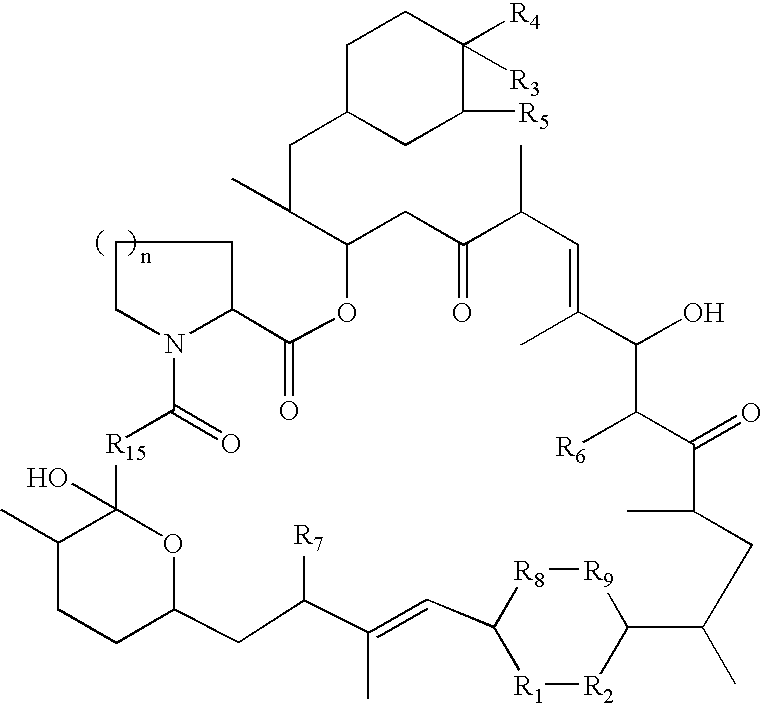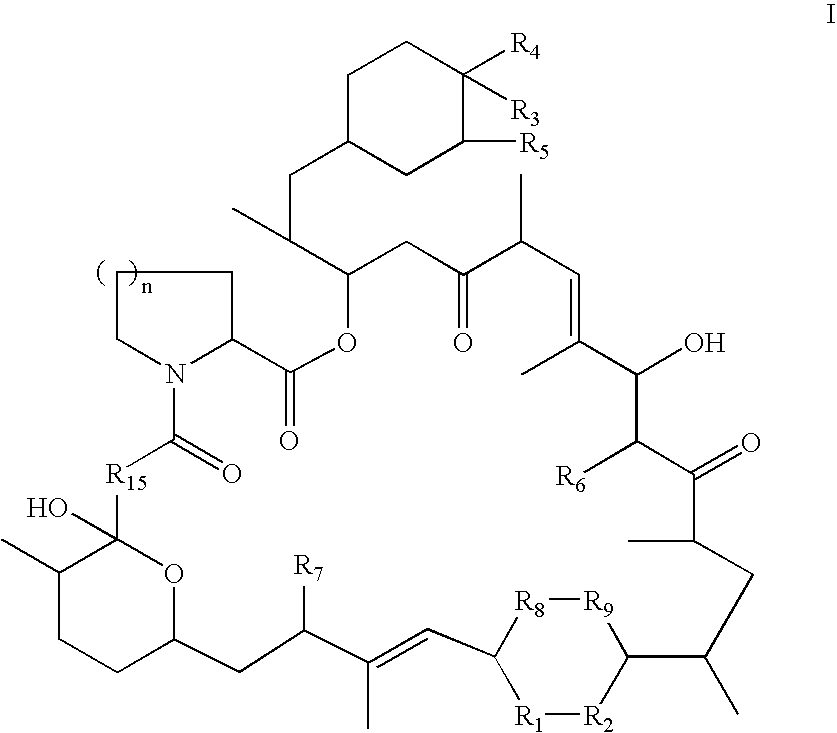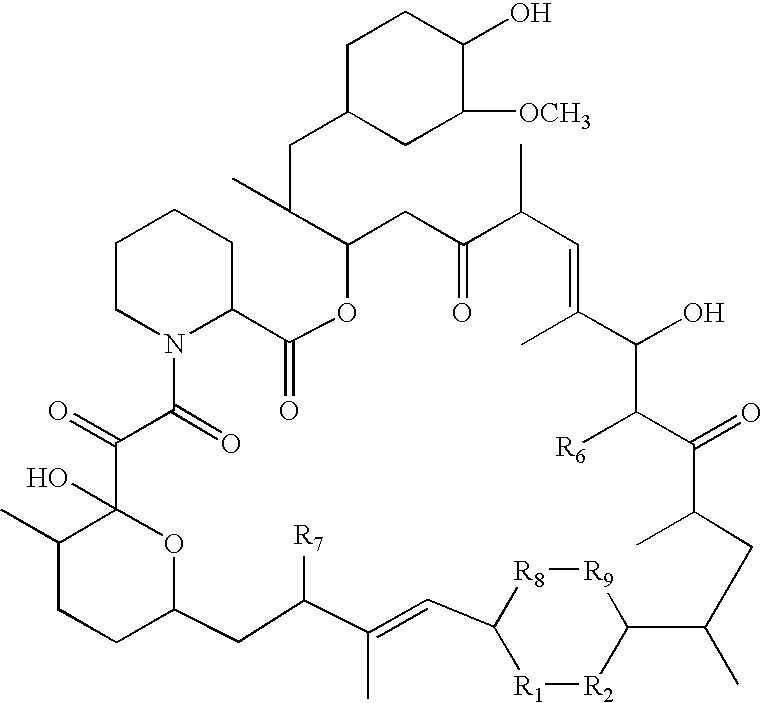Rapamycin derivatives and the uses thereof in the treatment of neurological disorders
a technology of rapamycin and derivatives, applied in the field of rapamycin derivatives and their use in the treatment of neurological disorders, can solve the problems of limited current therapies for treating ischemic stroke, severe obstacles and setbacks in clinical development of neurotrophins, and none to prevent or retard daergic neuron degeneration
- Summary
- Abstract
- Description
- Claims
- Application Information
AI Technical Summary
Benefits of technology
Problems solved by technology
Method used
Image
Examples
example 1
[0092]
[0093]Rapamycin (0.25 g, 0.274 mmol) is dissolved in 5 ml solvent with gentle heating. To this solution is added, dropwise, a solution of diethyl dicyanofumarate (0.183 g, 3 eq) in 7 mL solvent. The reaction mixture is stirred at 50 to 80° C. for 12 to 36 hours, and then the reaction mixture is via reversed-phase HPLC to yield the product.
example 2
[0094]
[0095]The compound prepared according to Example 1 is dissolved in methanol in a 18 mm test-tube, and a spatula tip of Pd / C catalyst (Aldrich) is added. The mixture is hydrogenated on a Parr apparatus for 15 minutes at 2.0 atmosphere H2. The products are chromatographed via reversed-phase HPLC to yield give the product.
example 3
[0096]Mescencephalic dopaminergic neuron cultures are prepared as described in Pong et al., J. Neurochem. 69: 986-994, 1997, which is incorporated herein by reference in its entirety. Embryonic day 15 (E15) rat fetuses are collected and dissected in ice-cold phosphate-buffered saline (PBS). The ventral piece of tissue compromising the mesencephalic dopaminergic region is dissected out. Dissected pieces of tissue are pooled together and transferred to an enzymatic dissociation medium containing 20 IU / mL papain in Earle's balanced salt solution (Worthington Biochemical, Freehold, N.J., USA) and incubated for 60 minutes at 37° C. After enzymatic dissociation, the papain solution is aspirated and the tissue mechanically triturated with a fire-polished glass Pasteur pipette in complete medium (equal volumes of minimum essential medium (MEM) and F-12 nutrient mixture (GibcoBRL) supplemented with 0.1 mg / ml apotransferrin and 2.5 μg / mL insulin) containing 2,000 IU / mL DNase and 10 mg / mL ovom...
PUM
| Property | Measurement | Unit |
|---|---|---|
| temperatures | aaaaa | aaaaa |
| temperature | aaaaa | aaaaa |
| temperature | aaaaa | aaaaa |
Abstract
Description
Claims
Application Information
 Login to View More
Login to View More - R&D
- Intellectual Property
- Life Sciences
- Materials
- Tech Scout
- Unparalleled Data Quality
- Higher Quality Content
- 60% Fewer Hallucinations
Browse by: Latest US Patents, China's latest patents, Technical Efficacy Thesaurus, Application Domain, Technology Topic, Popular Technical Reports.
© 2025 PatSnap. All rights reserved.Legal|Privacy policy|Modern Slavery Act Transparency Statement|Sitemap|About US| Contact US: help@patsnap.com



